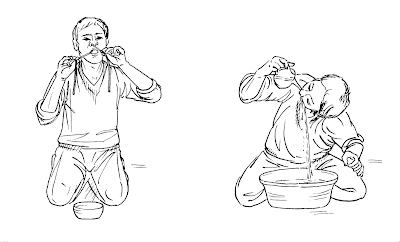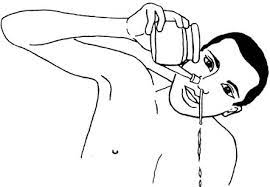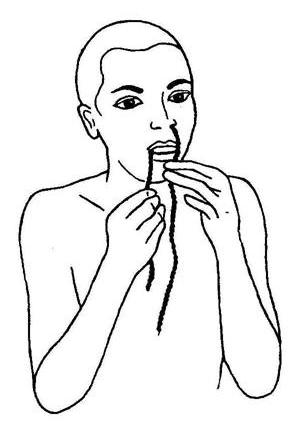day-13 Neti, Types, Methods, Advantages- Mitraasha


Namaste All My Yoga Yaatris! May Yog Bless You!

Knowledge of Yoga is infinite, boundless and timeless. “Learning Yoga is an everlasting journey that leads you within and Within is where you find the world of immortal bliss”. –Mitraasha
The idea behind running this 51 Days Yoga Consciousness series is to proffer my modest learnings and share the divine pearls of Yoga science with people at large. Let’s have a conjoint intent to learn, implement and extend the wisdom of Yoga with a positive co-action and harmonious reverberation amongst each other.
Out of all the Shat Karmas shared in the earlier post, I have chosen Neti kriya as today’s topic. Neti is the process of purification of the nasal passages. It can be practiced based on individual needs and the weather conditions where the person resides e.g., living in a hot, dry, humid, or polluted environment. This kriya cleans the sinuses, eases the headache, tones up the optic nerves and also improves sight.
There are 3 levels to the technique of Jal Neti, and can be performed according to the practitioner’s level of comfort and expertise. They are as follows:
A. Jala Neti- Level 1
It’s the simplest and most beginner level of Jal Neti. In this, water is passed from one nostril to the other.
B. Jala Neti- Level 2
Known as Vyutkarma, this is the second level of Jala Neti, where water is taken in from one nostril and spat out from the mouth.
C. Jala Neti- Level 3
Known as Shitkarma, this is the advanced and a little complex level of Jal Neti, where water is taken in through the mouth and removed through the nose.
Here, I will be talking about Level-1 in detail as it is easy to be performed even by the beginners.

Remember:
Sutra neti, a nasal passage cleansing technique is done with a cotton thread or rubber catheter. It’s also known as thread neti or rubber neti based on the type of thread you use.
Thread or Catheter:
For this kriya, one can use a cotton thread(available in stores) that is 4mm in width and around 36 cm long, which is enough length to pass down the nose and reach out through the mouth. Lubricate it with beeswax (or ghee) to avoid feeling a sense of nausea.
Another thing that can be used for Sutra Neti is a thin rubber catheter,which is usually a 1 to 3 mm thick tube-like thread that is fairly soft, well lubricated that helps to insert into the nostril.
However, this practice should not be done by the naive practitioners on their own without any guidance. It should be done under an experienced person’s supervision.

Sutra neti is best practiced in the morning before eating anything, as the nasal passages are naturally fully opened at that time. However, it is advisable to practice it once or twice a week, as doing it daily can weaken the natural receptors present in our nasal passages.
This kriya is kind of a substitute of Jal Neti and specifically suggested for people who may experience irritation by the saline water and is done with milk. Although that does not mean that it cannot be done in addition to Jal Neti, it can surely be done as it soothes the nasal lining after its exposure to the salty water. It is appropriate and doable even for people with chronic nasal bleeding and/or inflamed nasal lining.
Just like you would fill water in Jal Neti, for this Kriya fill the Neti pot with lukewarm milk (of body temperature) and unlike Jal Neti, half of the pot doesn’t need to flow through one side to another. Instead, milk is allowed to fill in one nostril and then it is taken out from the other nostril.
In this Kriya, ghee is used for nasal cleansing as a medium instead of milk or water. Besides ghee, any unconcentrated oil that is devoid of any artificially added chemicals can also be used as an alternative.
Sequence for practicing this Neti is the same as Jal Neti. Fill the Neti pot with a warm ghee and tilt your head in one side. Now, gently insert the spout into one of the nostrils and allow the ghee to pass through the opposite nostril. This Kriya can aid to cure the soreness of the nose that may have been caused due to the usage of saline water in Jal Neti.
Thought of the day: “Many of life’s failures are people who did not realize how close they were to success when they gave up.”– Thomas A. Edison
Link to day 12: Dhautis, Types, Methods, Advantages https://kreately.in/day-12-dhauti-types-methods-advantages/
Link to day 14: Trataka: To Gaze https://kreately.in/day-14-trataka-kriyato-gaze-mitraasha/
DISCLAIMER: The author is solely responsible for the views expressed in this article. The author carries the responsibility for citing and/or licensing of images utilized within the text.
